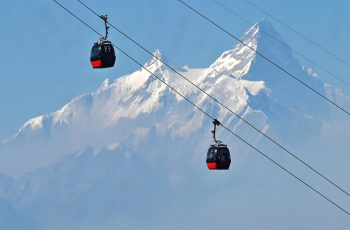This is What 24 of the World's Most Iconic Flags Mean
Nepal is the only country without a rectangular (or square) national flag.

An infographic detailing the symbolic meaning behind the design of the most prominent national flags. Photo: REUTERS/Stephane Mahe - RC137B88F8B0
From the skull and bones at the top of a pirate ship to a white flag on a battlefield, a single piece of fabric can be interpreted in a multitude of ways. Depending on where they fly, flags can represent freedom or control, danger or safety.
In the context of modern times, flags are best known as national symbols — and they’re used to air a country’s past, present, and future vision all rolled into one.
The Meaning of Flags
Today’s infographic from Just the Flight looks at some the world’s most iconic flags, and the intricate stories and ideals that can be found in their designs.
![]()
![]()
![]()
![]()
![]()
![]()
The Americas
Since 1777, the star-spangled banner of the United States has gone through several facelifts. The current version has been in use since Hawaii gained statehood in 1960. Puerto Rico has been voting to become the 51st state in recent years — and if the U.S. government proved to accept such a resolution, the flag would be amended once more.
The largest country in South America, Brazil adopted its flag design in 1889. The primarily green background represents its lush Amazonian forest while the yellow diamond signifies its wealth in gold. Meanwhile, the Portuguese slogan on the flag, Ordem e Progresso, is a nod to democracy.
Europe
Denmark holds the Guinness world record for the oldest continuous use of their national flag, since 1625. The Danish flag is known as the Dannebrog, or Danish Cloth — as legend has it, the Dannebrog ‘miraculously’ fell from the sky in a battle during the Northern Crusades.
The Union Jack of the United Kingdom combines aspects of three older national flags and was adopted in 1801. Displaying the flag upside down is considered lèse-majesté — “to do wrong to majesty”, or an insult to the Crown — and is offensive to some.
Asia and Oceania
India’s tricolour flag was first flown in 1923. However, the colours do not represent religions or hours in the day — saffron symbolizes indifference to material gains, the white band represents light while the navy blue Dharma Chakra (wheel of truth) depicts a dynamic change, and green demonstrates the country’s relationship to nature.
New Zealand’s flag features elements from the British Commonwealth. Since 2015, there have been ongoing debates among Kiwis about whether to amend the flag’s design. Frequent confusion with Australia is a significant pro for change, but the national identity and financial costs are strong arguments against it.
Nepal is the only country without a rectangular (or square) national flag. The two triangles pay tribute to its geographic location in the Himalayas as well as the Shah and Rana dynasties. The sun and moon symbols on the flag used to have human faces on them but were removed in 1962.
Africa
South Africa boasts one of the world’s most colourful flags. When it was first adopted after Nelson Mandela’s release from prison, it was the first world flag to have six colours but no seal or brocade. Interestingly, while there is no inherent meaning in its colours, the Y shape symbolizes the convergence of diverse elements and societal unity.
Mozambique is the only national flag in the world to feature a modern weapon – specifically, an AK-47 with an attached bayonet. Adopted in 1983, the rifle represents vigilance and defence, while the hoe crossing it represents the country’s agriculture.
-

In war-torn Sudan, a school offers a second chance at education
2025-03-02 -

Nepal community fights to save sacred forests from cable cars
2025-02-21 -

Chinese AI companies celebrate DeepSeek, shrug off global curbs
2025-02-21 -
.jpeg)
Students at South Asian University Hold Candlelight Vigil for Nepali Student, Demand Justice
2025-02-21 -

G20 foreign ministers meet in South Africa without US on board
2025-02-20 -

Afghanistan problem 'can be solved': former women's affairs minister
2025-02-20 -

Ghana scrambles to fill $156 million shortfall after USAID freeze
2025-02-19 -

New arena, new attitudes? Cash spat in spotlight at UN nature talks
2025-02-19 -

Conservation efforts can shift nature loss to more vulnerable regions: study
2025-02-14 -

Chinese authorities play cash-giving Cupid to boost marriage rates
2025-02-13
